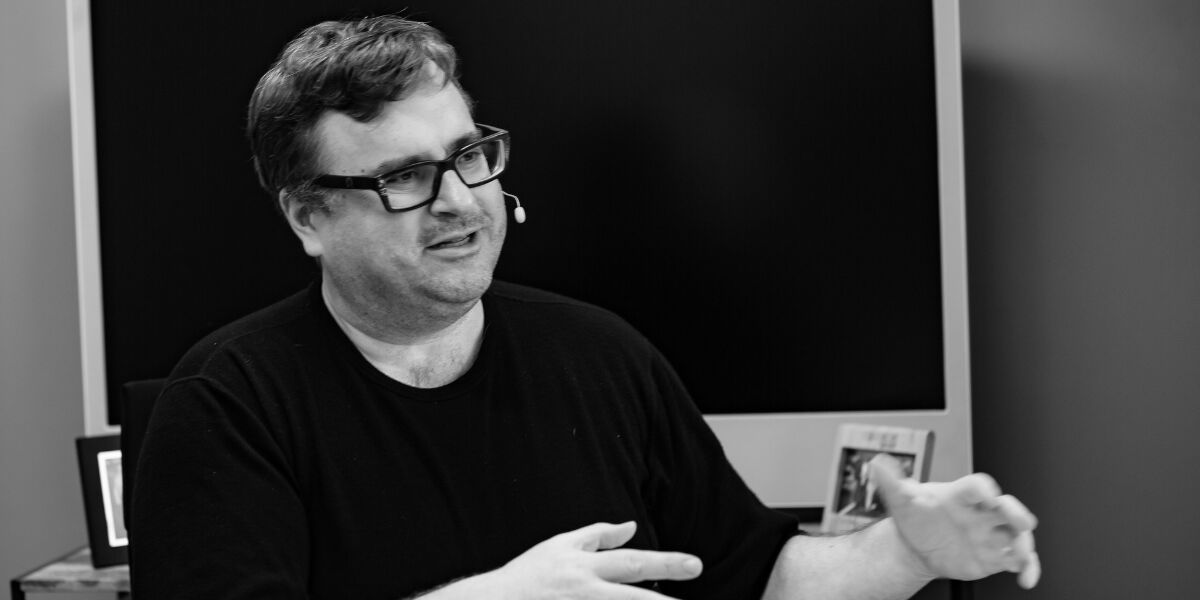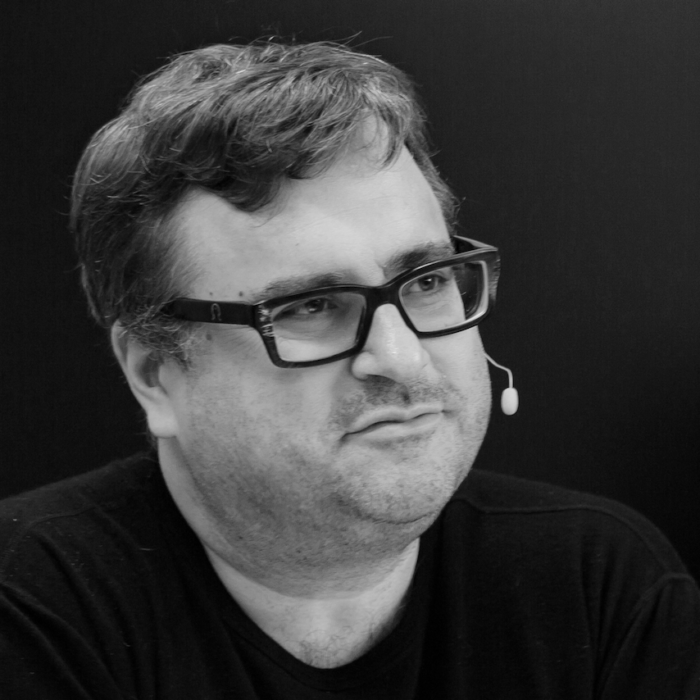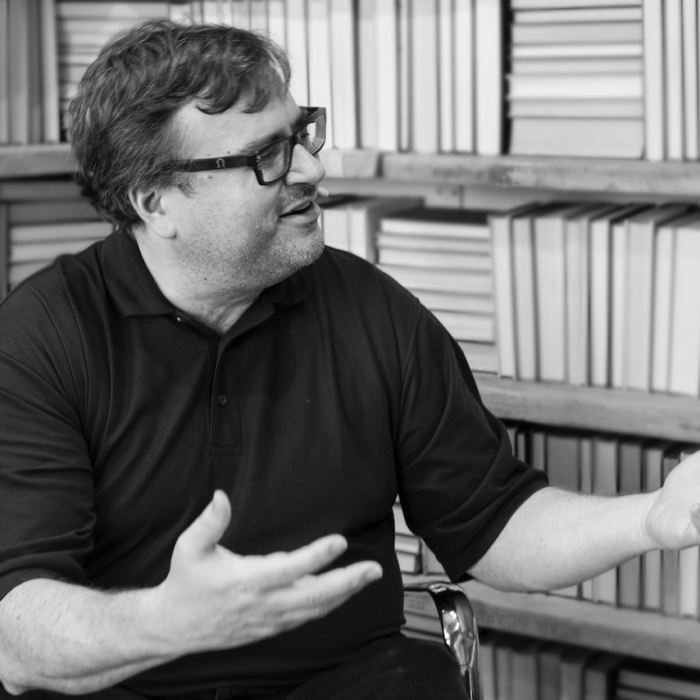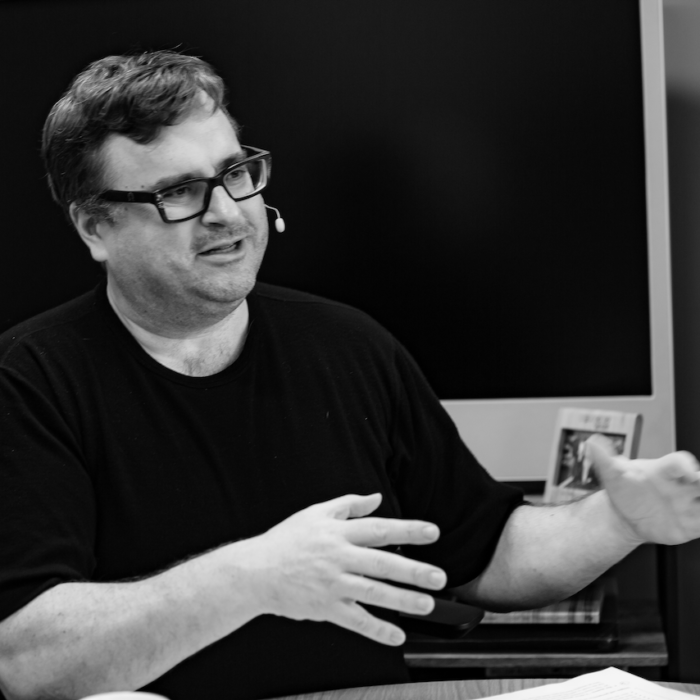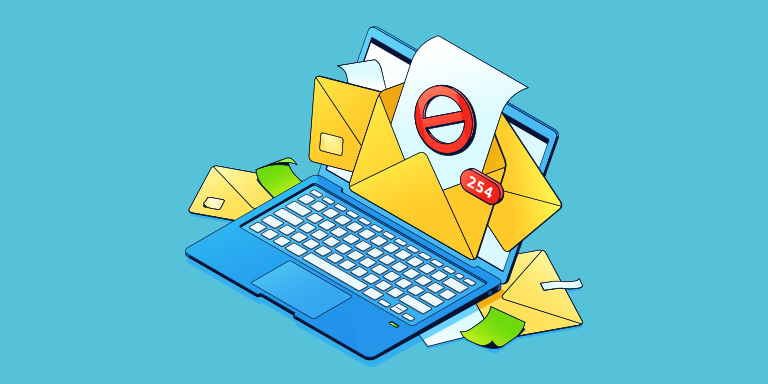Had Twitch been around when Reid Hoffman was 12, you may have been able to watch a future billionaire hone his business skills in real-time.
An avid gamer, Hoffman was obsessed with fantasy role-playing games, such as RuneQuest.
He loved the idea of creating a world, and, in some ways, participating in the earliest version of a metaverse where you had to learn how to collaborate with others, go on missions, and solve problems.
Then there was his passion for Avalon Hill board games that taught him the fundamentals of strategy. Fundamentals he still uses when talking to entrepreneurs today.
“Frequently when I’m talking to entrepreneurs, the metaphor that I use to try to unpack a strategy is, what’s your theory of the game? Right? So what game are you playing? What’s your theory of the game? How do you win?” Hoffman says. “There’s obviously OKRs and other kinds of things. But that sort of thing I think came from my 12-year-old self, who was so obsessive about games.”
Unbeknown to Hoffman at the time, his obsession with gaming would give him a foundation of skills that would help him create behemoths of companies such as LinkedIn and PayPal and invest in countless others, including Airbnb and Coupons.com. The acclaimed author and investor is also the creator of the popular podcast Masters of Scale.
So how does a man prepare to build two companies that sold for more than $27 billion combined?
Easy.
By studying philosophy, of course.
To Be or Not to Be
Hoffman never intended to get into tech.
Initially, he thought he would be an academic, and after he had completed his studies at Stanford, where he graduated with a bachelor’s in Symbolic Systems, he crossed the pond and enrolled at Oxford.
As a Marshall Scholar, he received his master’s degree in Philosophy in 1993. However, during his studies at Oxford, he realized he would be spending most of his time writing papers for the academic community if he continued with a career in academia versus pursuing an ambition close to his heart, which was finding ways to help humanity evolve.
Witnessing what his classmates at Stanford had been doing with technology and how they were improving the world, he wanted to be a part of that.
With more of a clear focus on what he wanted to do with his life and what kind of companies he wanted to be involved with, Hoffman was on the job hunt when he returned to California. And naturally, he ended up at the perfect tech company that shared the same passions.
“When I came back from Oxford and I was looking around for a job, when I had that prospect at Apple, I jumped at it because of those old senses,” Hoffman says. “Plus, part of what we do with technology is we try to make a better world for people.”
“Part of what we do with technology is we try to make a better world for people.”
Although this was during the dark ages of Apple before Steve Jobs had returned, the company still had a commitment to its old senses and dedication to user interface design. Hoffman loved that, and while working on user experience for nearly two years, he gained buckets of knowledge from the very best.
After Apple, he spent some time with Fujitsu as their director of product management and development before moving on to his first entrepreneurial venture, SocialNet.
Founded in 1997, the social network hoped to help users find dating opportunities and connect with friends.
With this being his first startup, Hoffman was learning on the fly. From being an inexperienced manager to not having a clear plan on customer acquisition, the young company had too many hurdles to overcome, and after two and a half years, SocialNet ran its course.
But Hoffman wouldn’t remain idle very long.
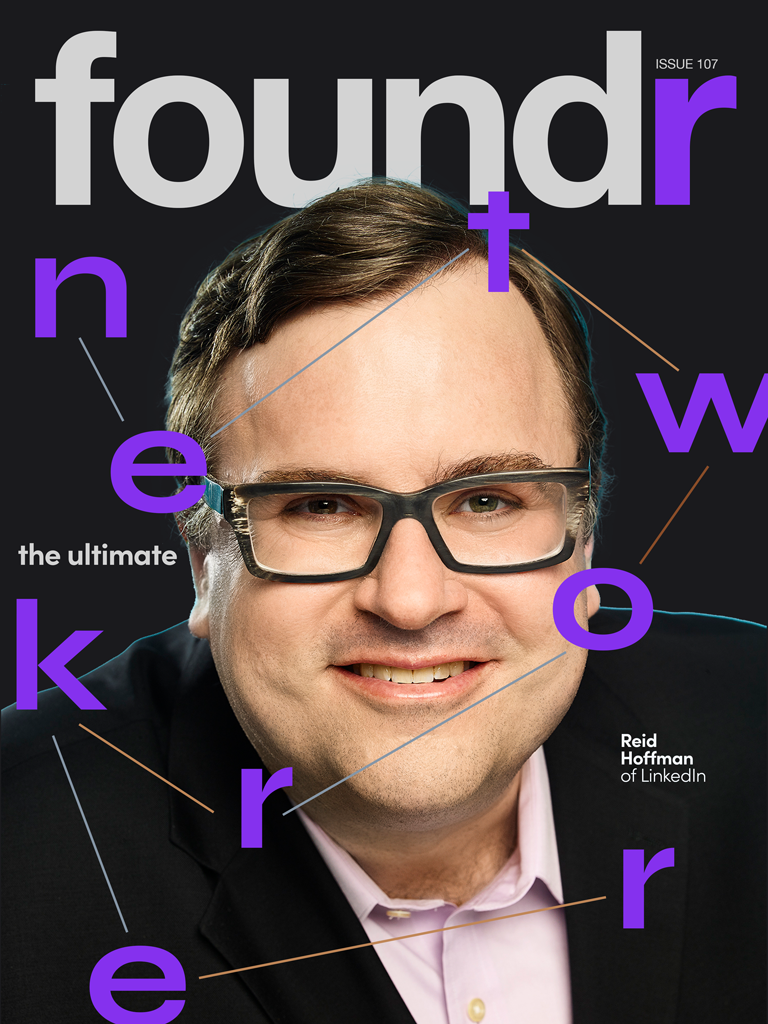
The PayPal Mafia
While at SocialNet, Hoffman was also on the founding board of a cutting-edge technology company: PayPal.
PayPal, an electronic money transmission service, was co-founded by his longtime friend Peter Thiel, a relationship that started when they were sophomores at Stanford.
With SocialNet now dissolved, Hoffman joined the so-called “PayPal Mafia,” where he worked alongside future tech icons such as Elon Musk. However, at the time, Hoffman had no clue how influential his colleagues were. He had no idea they would be the future leaders of tech.
“No,” Hoffman says. “What I did know was it was a bunch of people with a very intense learning curve, who are running at creating the future really fast and kind of throwing the entire candle in the fire.”
One would think that with a company full of future leaders, PayPal ran without a hitch and faced very few challenges. It was actually the complete opposite. In fact, it was perhaps the most intense period of Hoffman’s life.
“I think a lot of it is we’re a bunch of young folks who didn’t understand management very well,” Hoffman says. “And [we] tended to make a number of unforced errors that you’d have to correct from fast. PayPal had a large number of near-death experiences.”
When thinking back to one of those near-death experiences, Hoffman recalls a conversation with Thiel in August of 2000 about how fast they were spending money. “I said, ‘Look, we’re spending money so fast that if we were … throwing wads of $100 bills over the roof of the building, we’d spend money less fast doing that than the way we are now,’” he says.
Without a real business model in place at the time and no revenue coming in, the company was running on fumes.
However, it’s intense experiences like this that people rarely see. Sure, everyone sees the great product and the acquisition, but they don’t see the stress behind the scenes that their team was shouldering.
“I do think it’s one of the things that people should understand about entrepreneurship,” Hoffman says. “It does involve those strains; it does involve that kind of tear in the stuff that you’re doing. But of course, that’s one of the reasons why it’s hard. And when you succeed, it can also be heroic because you’ve gotten through that.”
Hoffman and the team would eventually create something heroic, as eBay would acquire PayPal for $1.5 billion in 2002.
With his newfound wealth, Hoffman had every intention of taking a year off and recalibrating. But there was one thing on his mind that he couldn’t shake, and he couldn’t wait a year to revisit it.
Round Two
After eBay acquired PayPal, Hoffman needed a break. He was burned out from his intense experience at PayPal, and he needed to recharge. But he was taken back to another conversation he had with Thiel and others at PayPal.
During a time when they felt the company might not last much longer, a few of them started talking about life after PayPal.
“And we said, ‘OK, what are our best alternative startup ideas?’ and LinkedIn was mine because it was my reflections on what I really should have done when I did SocialNet. Because part of the way that you can learn—and you know that you’re learning—is you think, well, what would I have told my younger self before I started SocialNet, what to do differently?”
Luckily, PayPal would end up taking off, and Hoffman stopped thinking about LinkedIn.
That is, until the acquisition by eBay.
“I was like, well, maybe I should take a year off,” Hoffman says. “And I said, wait a minute, the LinkedIn idea is still there. No one’s really done it. And if I don’t, if I take the year off, it’ll probably go away. If I do it now, then I have a chance at it.”
Instead of a year, Hoffman took three weeks off and traveled to Sydney and Australia’s Gold Coast.
Then it was back to work.
Taking some of his earnings from PayPal, Hoffman founded LinkedIn in 2002.
Although he had learned from his mistakes at SocialNet and the success he tasted at PayPal, Hoffman still wasn’t immune to poor judgment calls.
Despite his new social network being an innovative product designed as a hub for those looking to take charge of their professional careers, it didn’t take off right out of the gates.
Hoffman had seen the success of Friendster and had witnessed it go viral by friends inviting their network to join the site. There wasn’t really any deep knowledge to its viral growth, he thought. LinkedIn could have the same success, right?
“Oh, maybe we’ll just launch LinkedIn, and it will work,” Hoffman says. “And we launched LinkedIn, and crickets.”
“And we launched LinkedIn, and crickets.”
They had their work cut out for them.
The team got to work on features such as “People You May Know” and address book uploads. They had to convince people that there was value in this networking social media property, but without a large network, there was no value.
Eventually, through persistence and the flexibility of learning which problems needed to be solved first, LinkedIn went viral. So much so that it caught the attention of Microsoft.
Although it is always nice to receive a call from a company such as Microsoft, it doesn’t necessarily mean that it is the best move for the company. It had to be the right fit. Would a merger with Microsoft be what’s best for LinkedIn’s members? Would an acquisition further enhance LinkedIn’s mission and vision?
“Part of LinkedIn has always been how do you enable every individual professional, with a very loose definition of professional, so you can improve your skills at your job to take as much magnification, amplification control over their job and careers and economic opportunities as possible,” Hoffman says.
LinkedIn was already doing job seeking and expertise seeking well for its more than 400 million members. How would this potential bond help their members? How could Microsoft help their mission?
“Satya Nadella is a visionary CEO,” Hoffman says. “We had months and months of conversations about what are the things where you could have one plus one be 10 for both sides? And that’s kind of where it ended up.”
In the end, it was the perfect union, and in June 2016, Microsoft announced it had acquired LinkedIn for $26.2 billion.
Today, Hoffman spends his time investing, writing books, creating content, and serving on boards for some of the world’s most innovative companies. One would think that with all of his success, he’d have slowed down a little bit.
Not quite.
He still puts in 60-to-70-hour workweeks and is still looking for ways to make the world a better place.
And if there’s one bit of advice he’d give to aspiring entrepreneurs, it’s simple.
“Always be learning,” Hoffman says. “You know, for those fans of Glengarry Glen Ross. It’s actually not always be closing. It’s always be learning.”
Reid Hoffman’s 3 Tips For Startup Success
Reid Hoffman knows a thing or two about building revolutionary companies. He was the founder of LinkedIn and a founding board member of PayPal, two companies that have helped mold the world as we know it today and combined to sell for more than $27 billion.
But Hoffman also knows failure. Before he became one of the most influential and well-connected people in Silicon Valley, he was the CEO and founder of SocialNet, a social media platform that may have been before its time, but at the end of the day, a failed startup.
Through the learnings of his failure and his successes, here are some of Hoffman’s tips for setting yourself up for startup success.
1. Take Smart Risks
As a kid, Hoffman was an avid gamer. He was obsessed with fantasy role-playing games such as RuneQuest and had learned the fundamentals of strategy from Avalon Hill games.
Although Hoffman was a bright and promising child with a great future ahead, there is still one piece of advice he would tell his younger self if given the chance.
Take smart risks.
And not just any smart risks, but risks that other people aren’t willing to take because, quite frankly, they’re too big for them. Hoffman believes that it’s through those endeavors and leaps that you come out with the most extravagant results.
“You most often achieve your most heroic outcomes by doing that kind of smart risk,” Hoffman says, “because people thought it wasn’t possible to do. You realize that was realistically possible, and then you executed against it. And so you start learning about risk. You start learning about evaluating it; you start learning about mitigating it; you start looking about, learning about how to take that risk smartly.”
Keep Learning: Simon Sinek – Who’s the Man Behind the Personal Brand?
2. Build Your Network
When you’re launching a company, it’s nearly impossible to do it alone. The cases of someone finding great success while running things solo are slim.
Hoffman suggests that young entrepreneurs should strengthen their networks with a mix of collaborative partners, alliances, and acquaintances.
But what if an entrepreneur is looking for an investment from their network—particularly venture capitalists? He suggests they approach VCs before they need funding.
“Make sure you’re building a network,” Hoffman says. “Because your network will actually, in fact, give you advice but also connections to investment. And do so in advance of seeking the investment.”
3. Be Stuck in Permanent Beta
Hoffman loves to learn.
And if there’s one piece of advice Hoffman tells entrepreneurs often, it’s that they should always be learning. They should be stuck in a state of “permanent beta” where they are constantly learning, adapting, and evolving. And not just learning but learning at a fast learning curve.
However, no matter how much you absorb, you need to also have perseverance as an entrepreneur. You have to have the strength to keep pushing forward when times are tough. That’s what Hoffman did at PayPal during the most intense period of his life, and that’s his advice for others who are about to embark on a heroic journey that has a chance to change the world.
“I would say the addition … is this balance of kind of grit and persistence,” Hoffman says. “Because all entrepreneurship goes through valleys of the shadow, why was this a good idea? You know, minefields, where it seems like it’s all gonna fail.”
Keep pushing forward when others would think of quitting. If you can find the courage to push through when all seems to have failed and pair that with your learnings and the ability to adjust to the world and the market, Hoffman believes you’ve got a shot at doing something truly amazing and that you’ve given yourself a great chance at creating something truly remarkable for the world.
